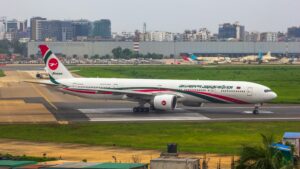Shaping the Sky: Future Aviation Safety and Strategic Growth


The aviation industry, a vital sector connecting people and goods globally, is undergoing significant transformations. The industry faces exciting opportunities and critical challenges with growing technological advancements and evolving market dynamics. Crafting the future of aviation requires enhancing business strategies for long-term success and reinforcing the strict safety protocols that have made aviation one of the safest modes of travel. This balance is essential as the industry progresses toward an era of greater sustainability, efficiency, and innovation.
Safety First: Evolving Protocols for a Changing Industry
Safety has always been paramount in the aviation industry and will remain a cornerstone of future development. As air travel continues to grow and new technologies emerge, ensuring the safety of passengers and crew remains the highest priority. Aviation safety protocols must adapt and incorporate the latest technological innovations, such as real-time data monitoring, predictive maintenance, and advanced flight management systems, to keep up with these advancements.
The role of technology in enhancing aviation safety cannot be overstated. AI and machine learning algorithms are now being used to predict potential risks before they occur, allowing for preventative measures that were previously impossible. This technology enables airlines and manufacturers to track the performance of aircraft components, reducing the likelihood of mechanical failures and improving flight reliability.
In addition to technological advancements, there is an increased focus on the human element of aviation safety. Regular training, mental health programs, and wellness initiatives are being implemented for pilots, flight attendants, and ground crew. These programs ensure that aviation professionals remain well-prepared for various emergencies and adapt to new technologies that enhance safety.
The focus on passenger safety is also reflected in how airlines communicate and educate travelers about the importance of safety procedures. By fostering a culture of awareness and transparency, airlines create a more informed and prepared passenger base, contributing to overall flight safety.
Business Strategy Innovation: Navigating the Modern Aviation Landscape
The aviation sector is becoming increasingly competitive, with airlines needing to navigate a rapidly evolving market while maintaining profitability and customer satisfaction. Airlines are reevaluating their business strategies to focus on efficiency, cost-effectiveness, and customer engagement to succeed.
Digital transformation plays a central role in modern aviation business strategies. Implementing AI, automation, and big data analytics is helping airlines streamline operations and reduce costs. These technologies allow for optimizing flight routes, predictive maintenance, and efficient resource management, all of which contribute to cost savings and enhanced operational performance.
Passenger expectations are also evolving, and airlines are responding by introducing personalized services and more flexible travel options. Enhanced loyalty programs, improved in-flight entertainment, and premium travel packages are standard offerings for passengers seeking a more tailored travel experience. At the same time, airlines continue to develop budget-friendly options to cater to the growing demand for affordable travel.
Strategic alliances and partnerships are also essential to business growth for many airlines. Airlines can expand their reach and access new markets by forming collaborations with other carriers, service providers, and tech companies. These partnerships help reduce costs and improve service offerings, creating a more robust competitive position in the global market.
Sustainability: Paving the Way for Eco-Friendly Aviation
The aviation industry has come under increasing scrutiny in recent years due to its carbon footprint, and sustainability is now a critical focus area for airlines, manufacturers, and airports. Environmental responsibility has become a key factor in shaping the future of aviation, and both industry leaders and policymakers are working toward solutions that reduce the ecological impact of air travel.
Sustainable aviation fuel (SAF) is one of the most promising developments in the industry. It offers a way to significantly reduce carbon emissions. SAF, which is derived from renewable resources such as plant oils, algae, and waste materials, has the potential to transform aviation’s environmental impact. Several airlines are already beginning to incorporate SAF into their fuel mix, and many have committed to scaling up their usage in the coming years.
In addition to SAF, other initiatives are being explored to reduce aviation’s carbon footprint. Aircraft manufacturers are investing in developing electric planes, hybrid propulsion systems, and more fuel-efficient designs. These innovations are designed to reduce emissions and improve the efficiency of air travel while addressing growing concerns about climate change.
Airports are also taking steps to promote sustainability by adopting green technologies. Many airports invest in energy-efficient infrastructure, waste reduction strategies, and renewable energy sources to make their operations more environmentally friendly. By adopting sustainable practices, airlines and airports can reduce costs, meet regulatory requirements, and improve their environmental credentials.
Collaboration: The Key to Advancing Aviation’s Future
Collaboration among industry stakeholders is vital in advancing the aviation industry and overcoming its challenges. Governments, airlines, manufacturers, regulators, and tech companies must work together to address safety concerns, develop new technologies, and implement sustainable practices.
International organizations such as the International Civil Aviation Organization (ICAO) are pivotal in shaping global aviation standards and policies. Through collaboration, these entities help to create a unified approach to safety regulations, environmental standards, and technological innovation. By setting clear and consistent guidelines, global cooperation ensures that the industry maintains high safety and operational efficiency across borders.
Partnerships between airlines and technology providers are also essential to innovation. Startups and established companies are exploring new ideas for improving customer service, enhancing flight operations, and reducing environmental impact. Airlines and technology providers can create solutions that transform the passenger experience and increase operational efficiency by working together.
As the aviation industry evolves, safety, business strategy, and sustainability will remain the primary drivers of innovation. With a focus on technological advancements, collaboration, and eco-friendly initiatives, the future of aviation holds tremendous potential. By embracing these challenges and opportunities, the industry can ensure that air travel remains a safe, efficient, and sustainable mode of transportation for future generations.
